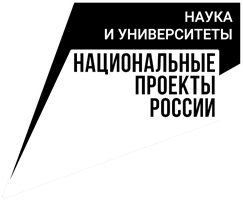Seminar
«Mathematical modeling of geophysical processes: direct and inverse problems»
Seminar Organizing Committee
| Leaders: |
Corr. RAS V.N. Lykosov (Marchuk Institute of Numerical Mathematics of RAS, RCC MSU); Doctor of Physics and Mathematics V.M. Stepanenko (RCC MSU, Geographical Faculty of Moscow State University) |
| Secretary: |
A.V. Debolsky (RCC MSU, A.M. Obukhov Institute of Atmospheric Physics of RAS) |
PROGRAM
17:15 (GMT+3)
| M. Sofiev | Finnish Meteorological Institute |
System for Integrated modeLling of Atmospheric coMposition: SILAM. Model features, capabilities and applications.
The purpose of the current seminar is to present the Finnish atmospheric composition and emergency decision support model SILAM and to find out possible links for collaborative work of the FMI and MSU modelling teams.
Currently, SILAM (http://silam.fmi.fi) is a global-to-gamma-mesoscale chemistry transport model. At the large scales, the global SILAM applications cover the troposphere and the stratosphere accounting for the related chemical and physical transformations. Regional simulations can have spatial resolution up to one kilometre. At this resolution SILAM has been applied for detailed analysis of air quality of Finland. New urban-scale projects require the model to reach sub-km scales going to down to tens of metres with surface-resolving applications. It remains a challenge to adapt the SILAM transport modules to such type of simulations.
Practical challenges of high-resolution applications refer to (i) SILAM adaptations to run with LES-type meteorological driver, (ii) reaching a meaningful compromise between the coverage of the applications and their spatial resolution. At the current moment, computational resources of FMI allow for year(s)-long SILAM simulations with a grid up to 1000 x 1000 x 15 cells. For a 50-km city like Moscow, this means 50m spatial resolution, too coarse for resolving the urban surface.
At the seminar, I will present the SILAM model, its typical applications at regional scale and outline the current ideas of the model applications for urban-scale air quality assessment.
Zoom conference link (March 25 from 05:15PM GMT+3):
- Topic: "Mathematical modeling of geophysical processes: direct and inverse problems."
- Time: Mar 25, 2021 05:15 PM Moscow
- Join Zoom Meeting:
https://us02web.zoom.us/j/82874238277?pwd=Rm0xOHM5dUdnK0doMVZFV0JRemFFZz09 - Meeting ID: 828 7423 8277
- Passcode: 006510
Instructions for installing and using the Zoom platform are available, for example, here: https://support.zoom.us/hc/ru/articles/201362033-Начало-работы-на-ПК-и-Mac.
For communication on all issues related to the work of the seminar, please contact the Scientific Secretary Andrey Vladimirovich Debolsky at and.debol@srcc.msu.ru

